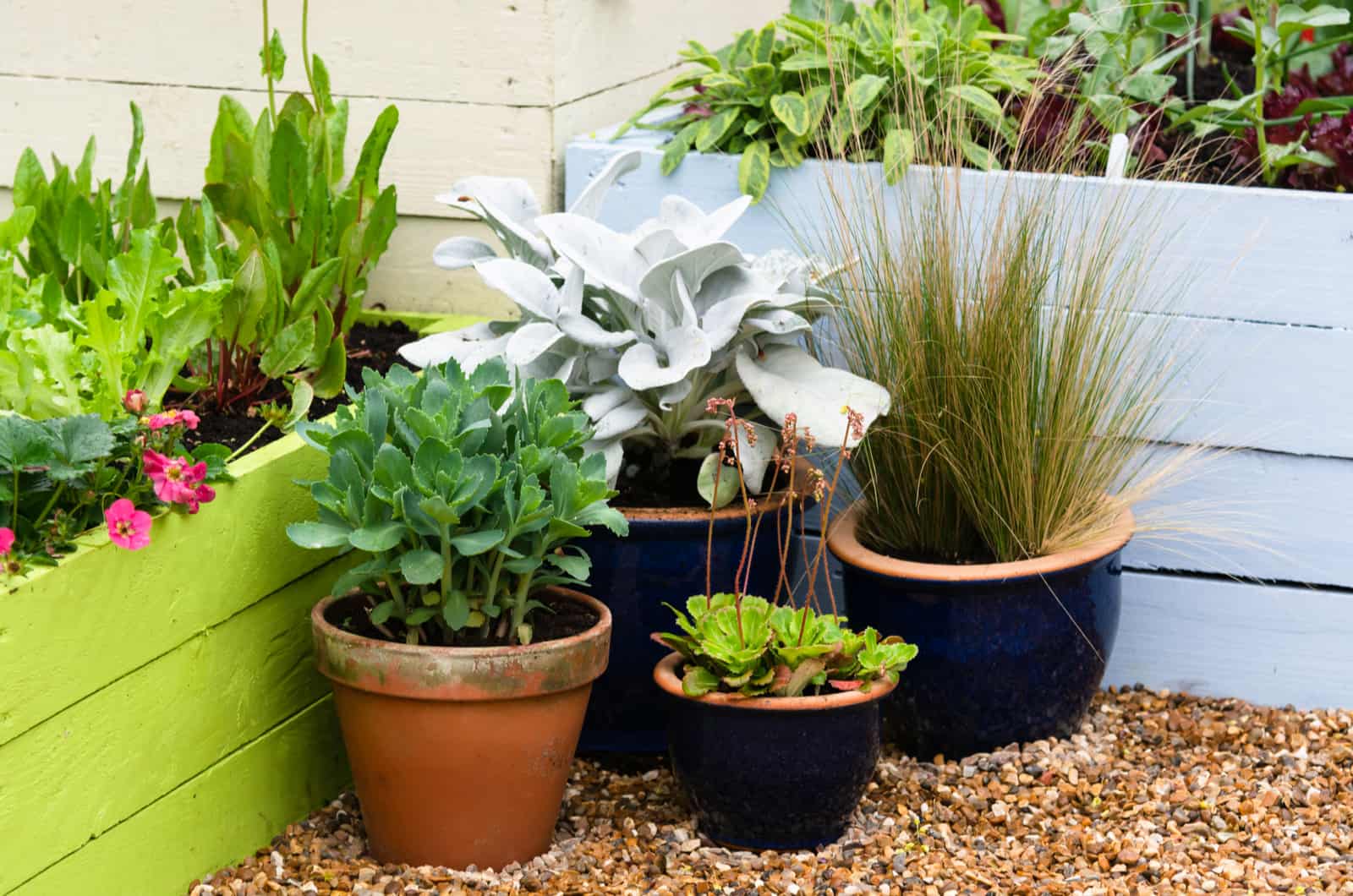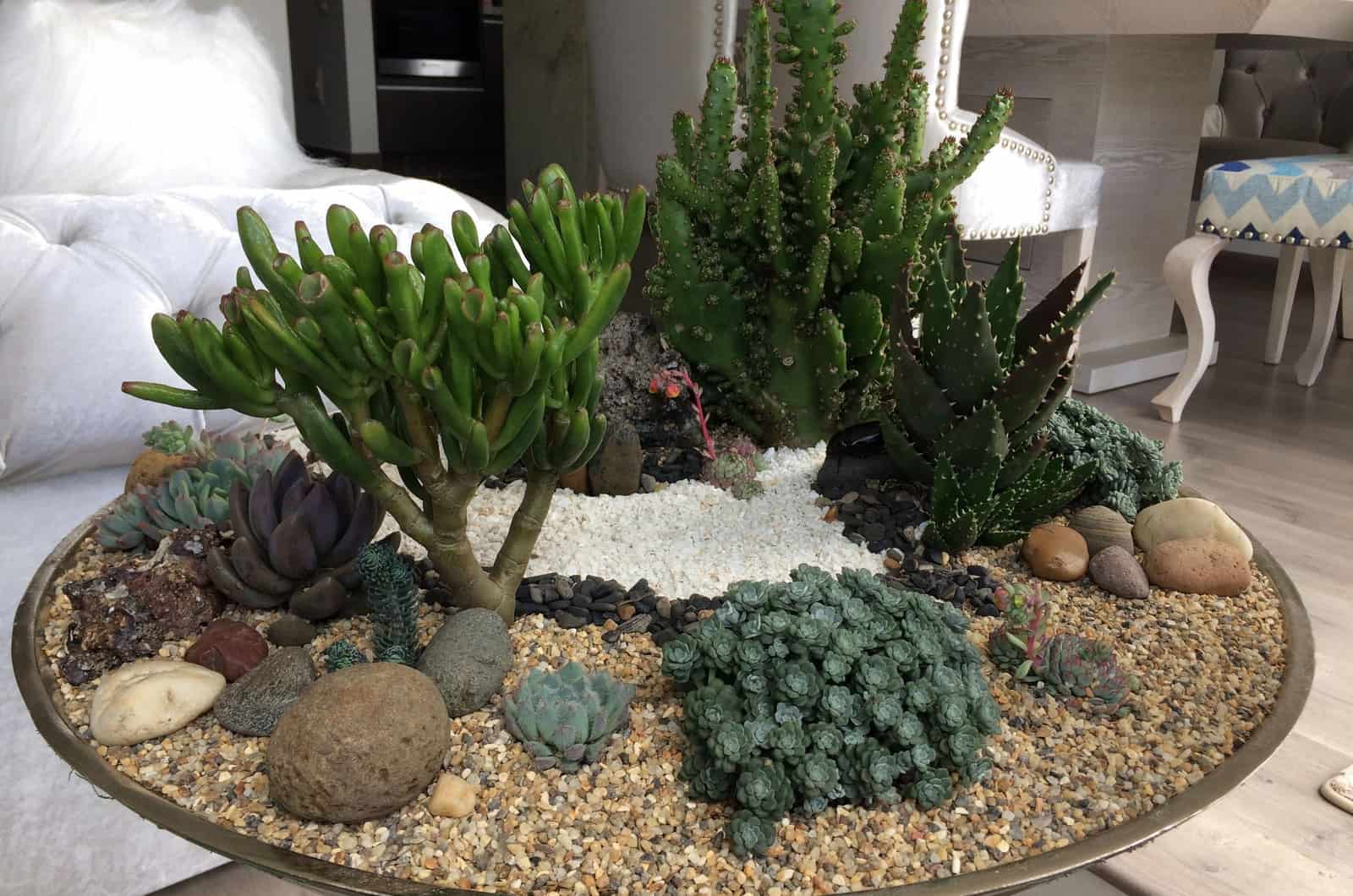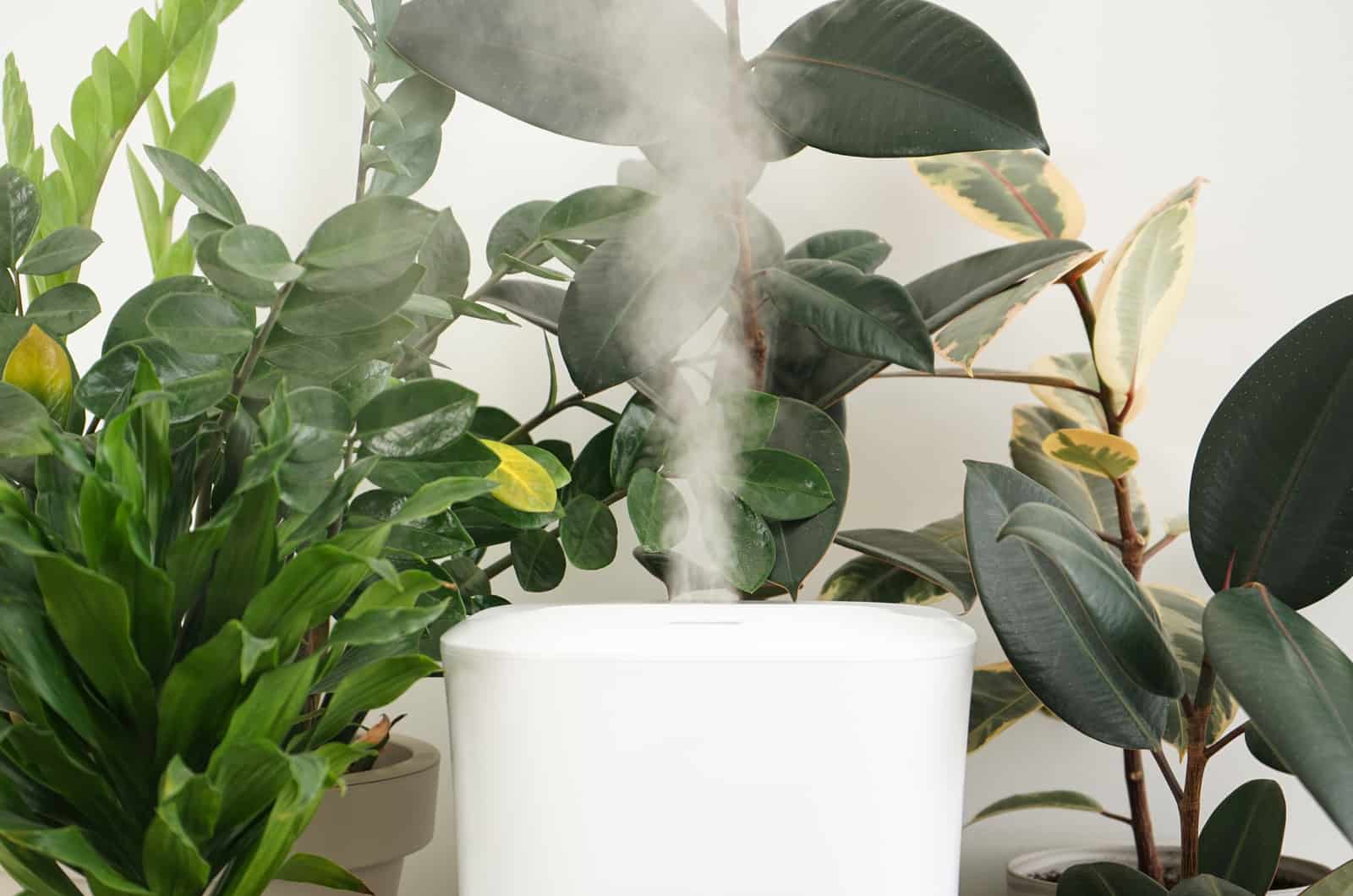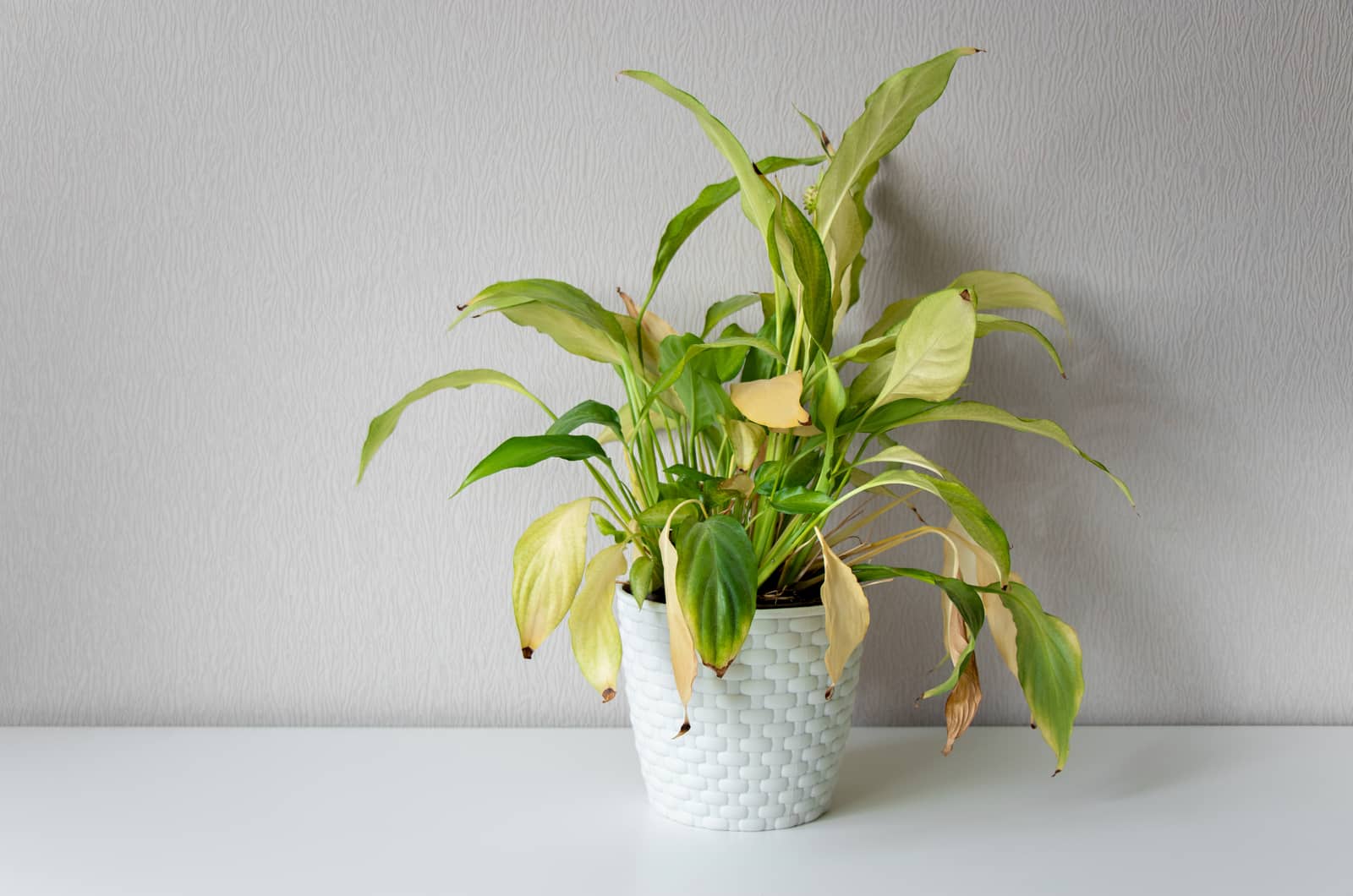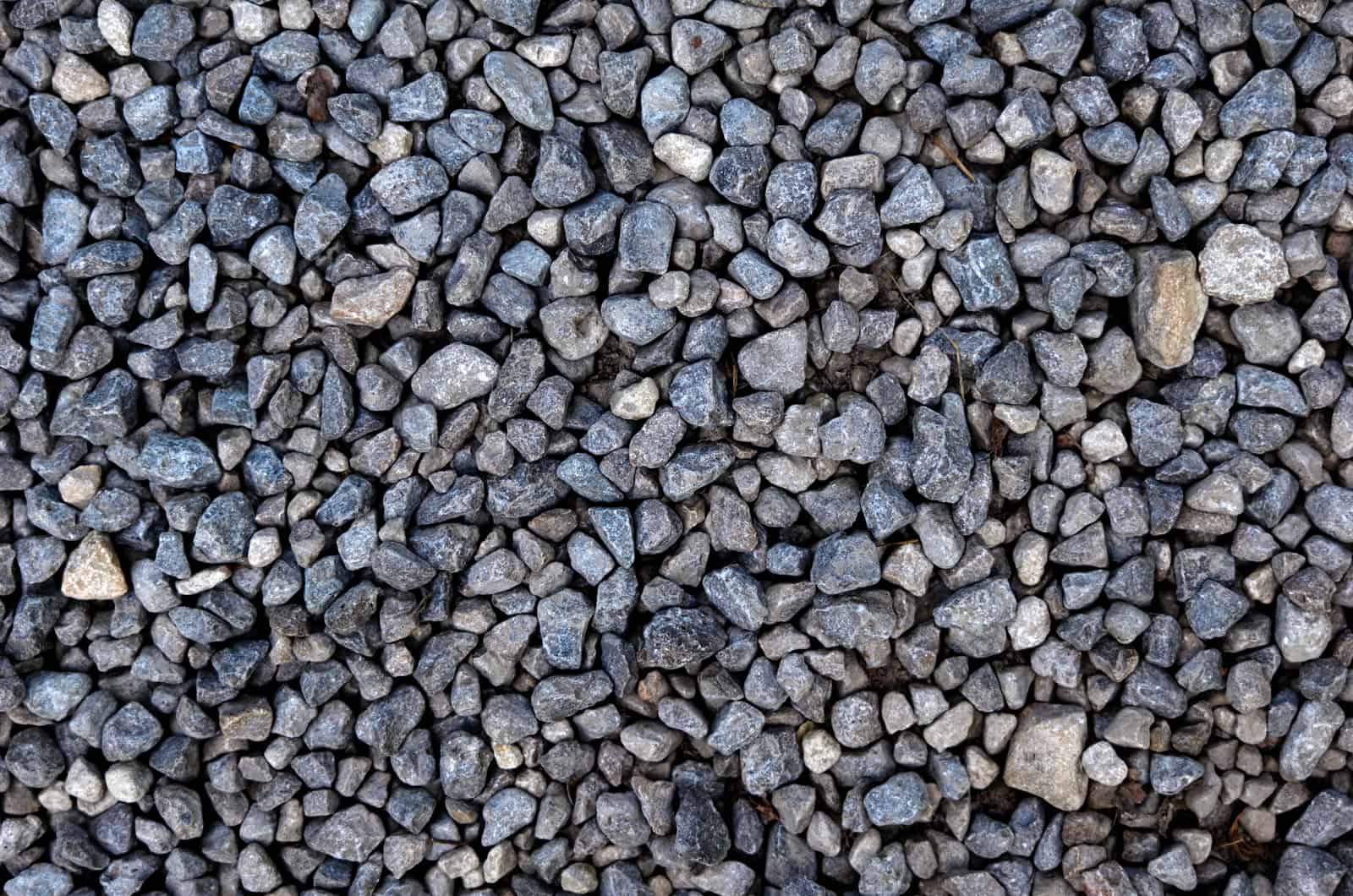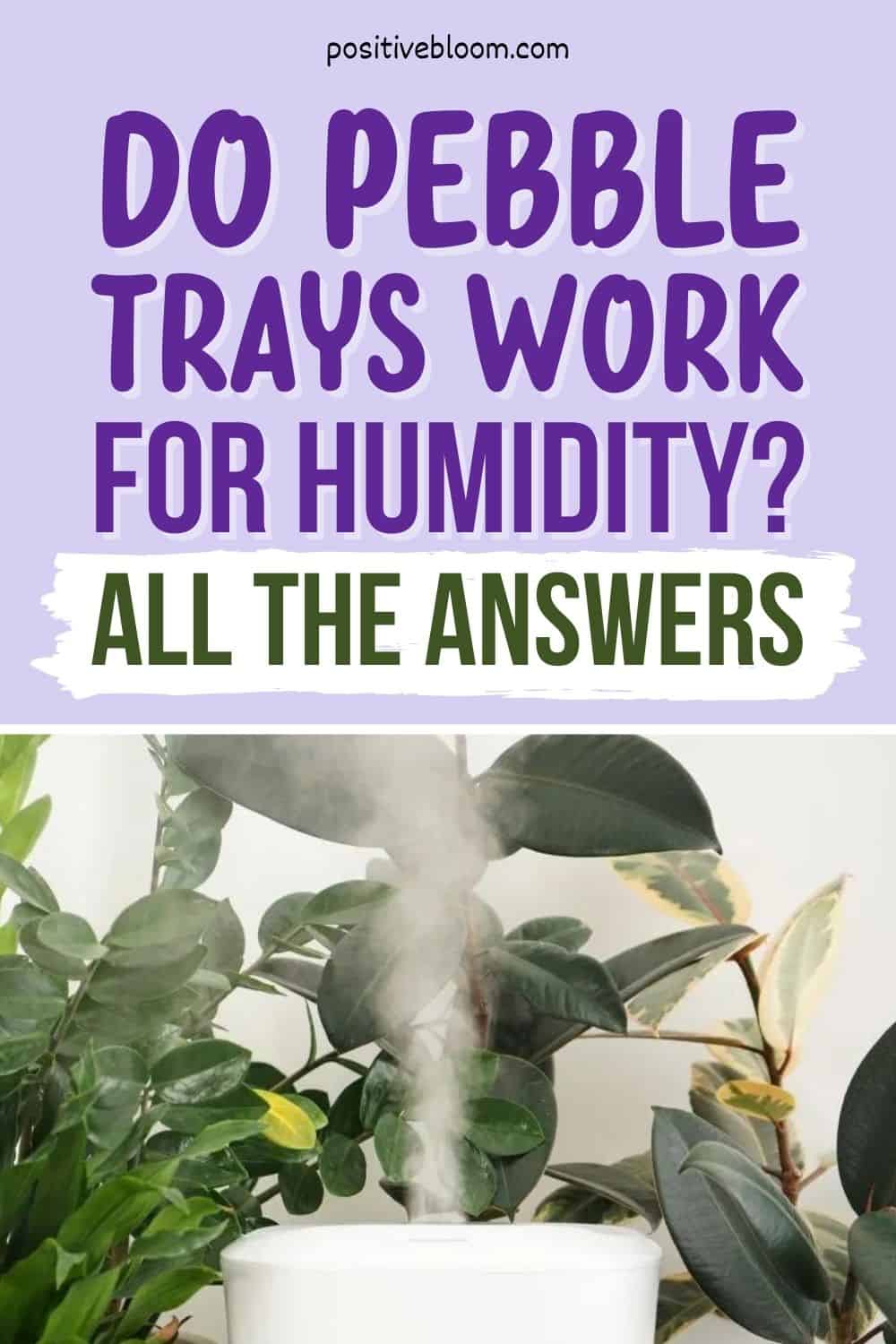Plant care isn’t just about lighting, watering, and the type of soil you use; there’s more to it than that. Humidity is an essential aspect of caring for plants, which is why it’s important to learn their individual preferences.
Some plants like higher humidity, whereas others prefer an arid climate. Therefore, it is crucial to know how to raise and lower air moisture.
You have probably heard about humidity trays (more commonly known as pebble or gravel trays), and maybe even wondered whether they actually work.
That’s why we decided to answer the question, “Do pebble trays work for humidity?”.
There are many other ways of increasing humidity, and we’ll introduce some of those as well.
But what good is knowing how to increase humidity if you don’t know which plants prefer high humidity levels. To that end, we’ll also look at some plants that like and dislike humidity, as well as some ways of lowering the moisture in case you decide you want to grow a plant that prefers dry air.
Let’s begin!
Do Pebble Trays Work For Humidity?
Yes, pebble trays are a good (and safe) way of raising humidity for your houseplants. However, they cannot significantly increase the level of humidity.
According to Kohl and his experiment on the effectiveness of pebble trays, relative humidity can be increased by 7% at a height of 1.5 inches (40 mm) above the level of water in the summer, and by only 3% in the winter months (at the same height).
Therefore, your moisture-loving potted plants won’t get the extra humidity they require from humidity trays.
Don’t let this discourage you! Smaller plants that thrive in moderate humidity levels can actually benefit from pebble trays. Ensure that the pot contains drainage holes and place it on top of the pebbles.
The process of evaporation will begin and the moisture enters through the potholes. It could even rise up to the leaves if the pebble tray is big enough.
For this reason, you should always try to get bigger trays so that there’s enough water to evaporate and moisturize your plant.
What Size Of Tray And Pebbles Should You Use?
Speaking of size, not every room and plant require the same tray. You should always use bigger trays in larger rooms because the water will evaporate faster in them.
Also, bigger plants need more space and water and often cannot fit in smaller trays, which is why you should get a larger one to save yourself the trouble.
Finally, pebble size is also important, and generally, larger trays and plants require larger pebbles or small rocks to support them.
How To Make A Pebble Tray
Now that you know more about sizes, it is time to learn how to make a pebble tray. It’s pretty easy – find a shallow tray that is deep enough to hold some pebbles and water.
Then, fill it with gravel, decorative pebbles, or small rocks, and pour water over it just below the stone level. These pea-sized rocks are essential because they keep the pot above the water level and prevent the standing water from coming into contact with your plant’s roots, which can lead to overwatering and root rot.
Finally, put your plant’s pot on top of the tray and place it in its final location.
If you want to create a humidity tray that will fit into your modern design, you can order some white or black pebbles on Amazon for decoration.
Here are some tips for making a DIY pebble tray if you’re still not sure what it’s supposed to look like:
5 Other Ways Of Raising Humidity Levels
We mentioned that humidity trays cannot significantly increase humidity for your indoor plants, which is why we are going to show you some other ways to try.
If you have large, tropical plants, you should definitely use a humidifier because that’s the best (and perhaps the only) option for raising the air moisture.
However, for smaller plants that can tolerate and thrive in moderate humidity levels, you can simply turn to misting or grouping them together.
We’ll examine five additional ways of increasing humidity that you can experiment with and decide which is the best for your plants.
However, before doing anything, check the exact humidity on a hygrometer, and if it turns out that it’s within normal limits you won’t have to do any extra work.
1. Investing In A Humidifier
A humidifier is the best solution for giving your plants the extra moisture they need in the drier winter air. You simply have to turn it on and all your worries will be at an end.
However, humidity is not the only plant requirement; they also need light to thrive. Therefore, purchasing some grow lights for plants can make a tremendous difference for your green buddies.
2. Misting Your Plants
Misting plants every now and again is probably the easiest solution to low humidity. Simply spray some water on your plant’s leaves and allow them to dry before misting them again.
However, this method has its downsides. It can lead to powdery mildew and other fungal infections that thrive in warm and humid environments.
Don’t over-mist your plants, and always let the foliage dry between misting.
3. Growing Plants In Terrariums
Growing plants in terrariums is another excellent way of raising indoor humidity. Unfortunately, some plants are simply too big for terrariums, so you’ll have to find another way to accommodate them.
However, smaller plants are great centerpieces for any room, and glass terrariums help make them just that. Every plant transpires, but glass containers capture the moisture that remains around the plant, which increases humidity.
You should water your terrarium plants regularly, but always check whether the soil is a bit dry before irrigating them. The soil will dry out slower due to a higher percentage of air moisture.
4. Moving Plants To More Humid Rooms
You can also help your plants by moving them to more humid rooms, such as kitchens and bathrooms.
However, you have to make sure that they’re still getting enough light.
5. Grouping Plants
Finally, grouping your plants together is an ingenious idea for increasing humidity. The plants transpire and share the moisture.
However, like pebble trays, grouping plants doesn’t substantially increase humidity, though it can help varieties that prefer slightly higher humidity levels.
Always group plants with similar humidity needs, and there won‘t be any dissatisfied companions!
How Can You Tell If Plants Need More Humidity?
Plants that need high humidity usually experience various issues with their foliage if they don’t get the conditions they need. Therefore, if you don’t want unsightly plants with dull, yellow, and crispy foliage with brown edges, you should increase the level of air moisture around your plant.
We’ll discuss some symptoms of plants that need more humidity, and if you recognize any of them on your plants you must raise the humidity immediately.
Crispy Leaves And Brown Edges
Crispy leaves with brown edges are one of the most common symptoms of low humidity. However, too much sunlight can cause the same issue, so be sure to check whether your plant is exposed to direct sunlight before introducing it to more moisture.
These symptoms usually appear in hot and dry areas because plants transpire more in hotter climates and lose more water.
Sometimes the moisture in the soil isn’t sufficient, so your plant needs something to lower its transpiration rate. Humidity helps with this, and even though crispy and brown-edged leaves won’t turn green again, at least no more leaves will suffer from this condition.
Yellow Leaves
Many different things can cause yellow leaves, including overwatering and underwatering, too much sunlight, nutrient deficiency, etc. Low humidity can be another cause of yellowing leaves, and if you check the location for sunlight and the soil for moisture, and they turn out to be fine, you should measure the air moisture of your home.
Unfortunately, just like crispy leaves, yellow foliage won’t become green again, so you’ll have to prune it in order for your plant to send more energy to produce new and healthy leaves.
Wilted Plant
If you notice your prayer plant drooping, don’t forget to check the humidity level because that can cause a plant to wilt.
Wilting is usually caused by a lack of moisture in the soil, so be sure to water your plants regularly.
Thankfully, this issue is reversible, and you’ll see your plant spring back to life almost immediately after being watered.
Dull Foliage
The large, shiny leaves of tropical plants can lose their glamor and appear dull and unhealthy due to a lack of humidity.
Be sure to remember to at least mist them from time to time to help keep them strong and healthy.
Stunted Growth
Finally, low humidity can lead to stunted and slow growth. When there’s not enough moisture, plants cannot photosynthesize and produce the food and energy they need for development.
The plant will divert all its energy into surviving instead of producing more leaves, which will only drain it of the little energy it has left.
Remember to mist your plants, install a pebble tray, or get a humidifier to keep them happy.
Plants That Like High Humidity
Many plants prefer high humidity, and the most common ones are aroids and tropical plants like philodendrons, monsteras, calatheas, anthuriums, and marantas.
Ferns and fiddle leaf figs also thrive in high humidity levels, and there are also plants with adorable flowers that prefer higher humidity.
Begonias and orchids are two great options. If you have ever wondered why your orchid is dying, it may be due to low humidity among other things like improper watering, lighting, certain pests and diseases, etc.
Plants That Don’t Like Humidity
Just like there are plants that love humidity, there are others that prefer arid conditions, like cactus and succulent plants, for example.
However, there are certain succulents that like higher humidity. Still, you don’t have to do anything to increase it as they do just fine in both moderate and lower humidity levels.
Wax plants, spineless yucca, and silver squill aren’t fans of humidity, but this only makes them easier to grow and care for as you don’t have to make any changes to your home.
How To Lower Humidity
If you have plants that prefer lower humidity, there are a few things you can do to help them thrive.
In the following section, we’ll examine some methods of lowering humidity so you can provide your green companions with the best care possible.
Using A Dehumidifier
Most people who live in tropical climates cannot grow succulents, cactuses, and other plants that don’t do well in high humidity. However, you don’t have to give up these plants just because one thing doesn’t suit them, especially when you can always change that thing.
Dehumidifiers are the best way to lower humidity so your plants can thrive. Don’t leave it working for too long, though, because you don’t want to end up using a humidifier to counterbalance the effect!
Increasing Air Circulation
Increasing air circulation is beneficial for many reasons, but it won’t significantly reduce air moisture. You simply place your plants some distance apart so that the moisture they transpire can disperse and not humidify the plants.
This technique can also work outside, so plant your fruits and veggies at least a few feet away from each other for the best results.
Using Air Condition Devices And Heaters
Finally, air conditions are important, and heaters and air conditioners drastically reduce air moisture, especially heaters, which is why we always experience issues with our plants in winter.
However, even though some plants may like lower humidity levels, you should still keep them away from the AC and heaters as they can really harm them.
No plant likes drastic and sudden changes in temperatures and drafts, so make sure to avoid spaces near them when placing your plants.
To Wrap Up
The goal of this article was to provide you with an answer to the question, “Do pebble trays work for humidity?”.
Now you know that they do work, but they don’t increase humidity drastically, which is why you should get a humidifier if you own a plant that loves air moisture.
We also included some other common ways of raising humidity levels, such as using humidifiers, planting your houseplants in terrariums, grouping plants together, moving them to more humid rooms, or simply misting them.
It is up to you to decide which method is the best and most convenient for you and your plants.
We also looked at some symptoms of low humidity so you can always recognize what your plant is telling you.
Finally, we discussed some plants that love high and low humidity, so you can get one that is best for your region and climate.
Good luck with raising humidity levels, and until next time!
Like this post? Share or pin it for later!

